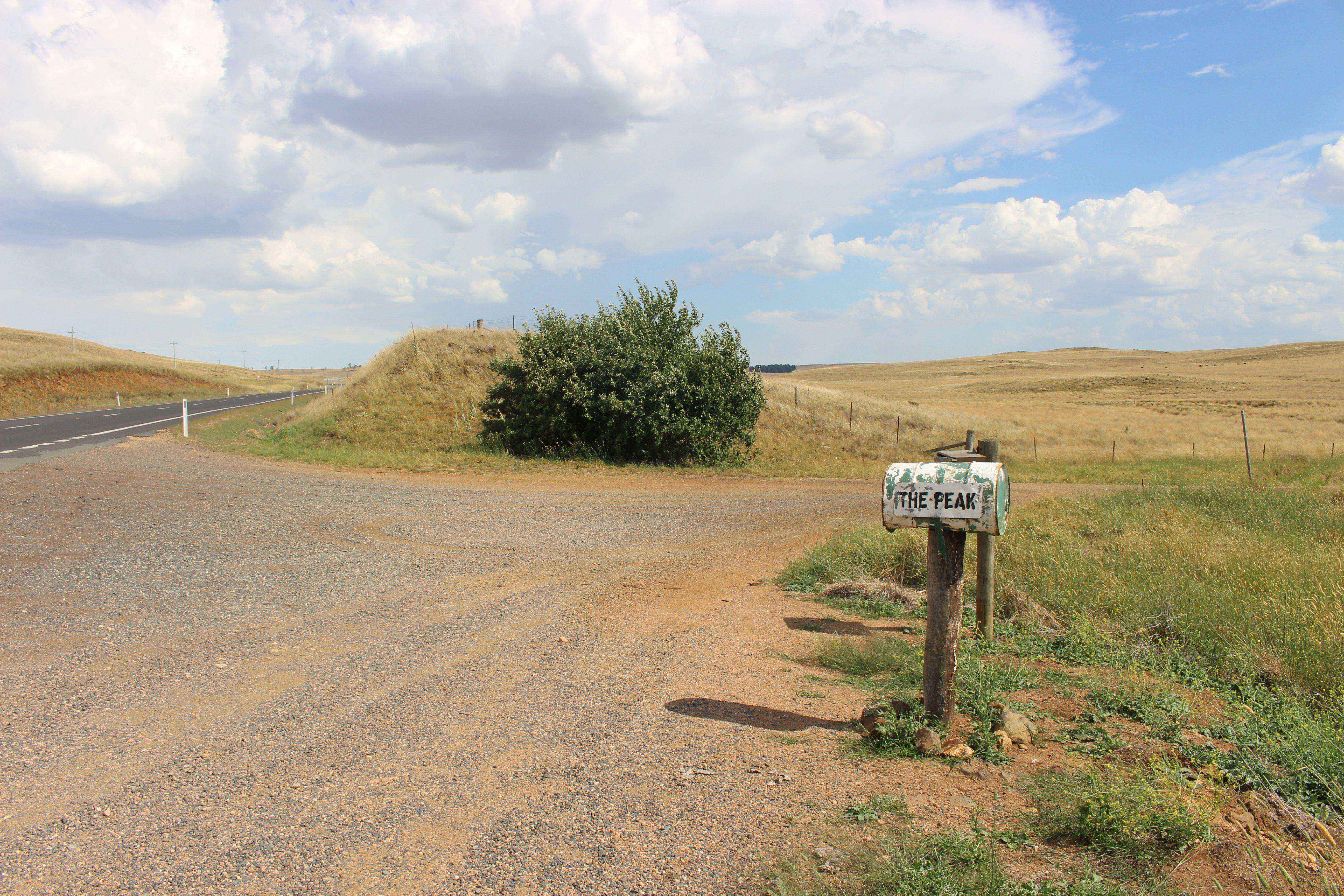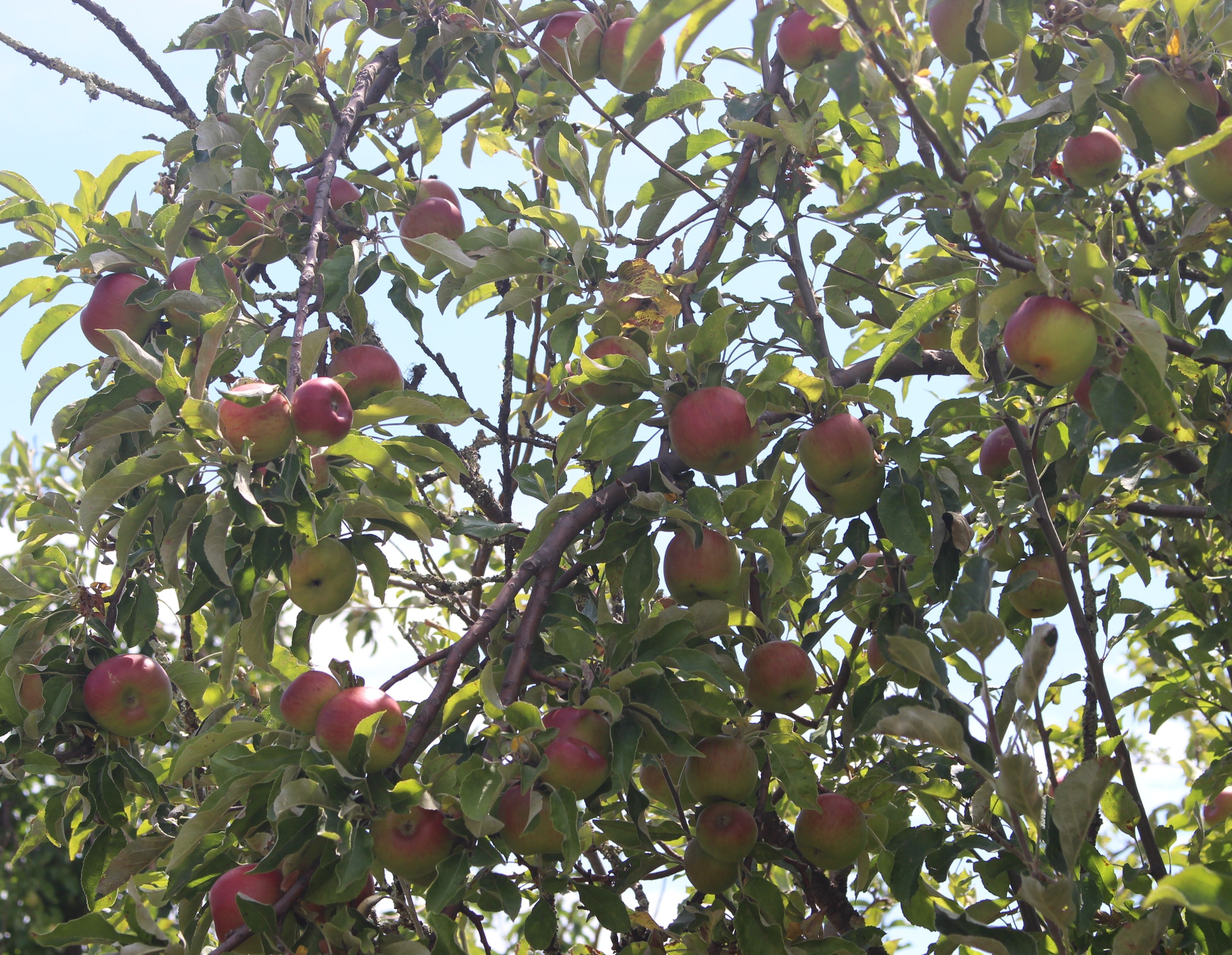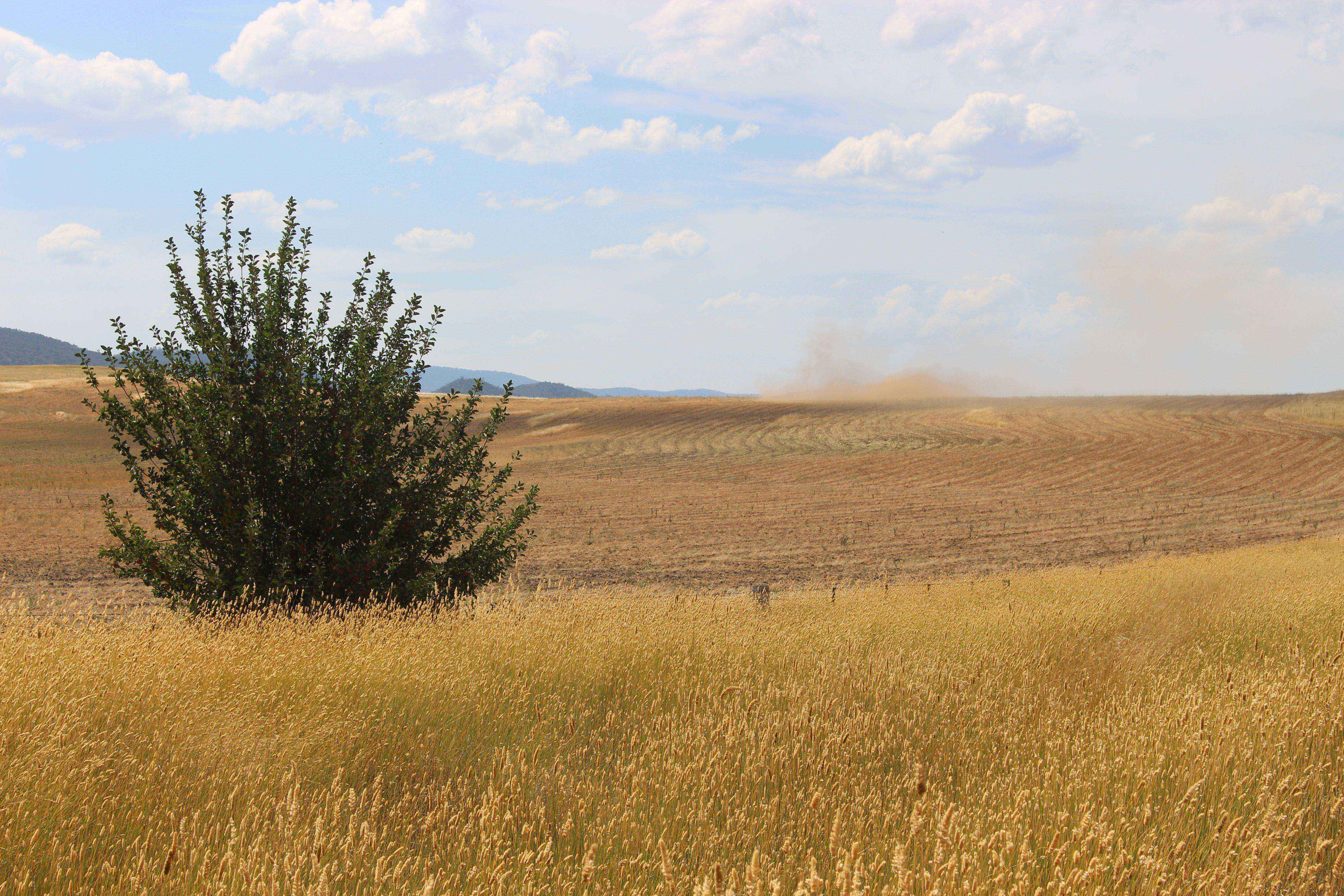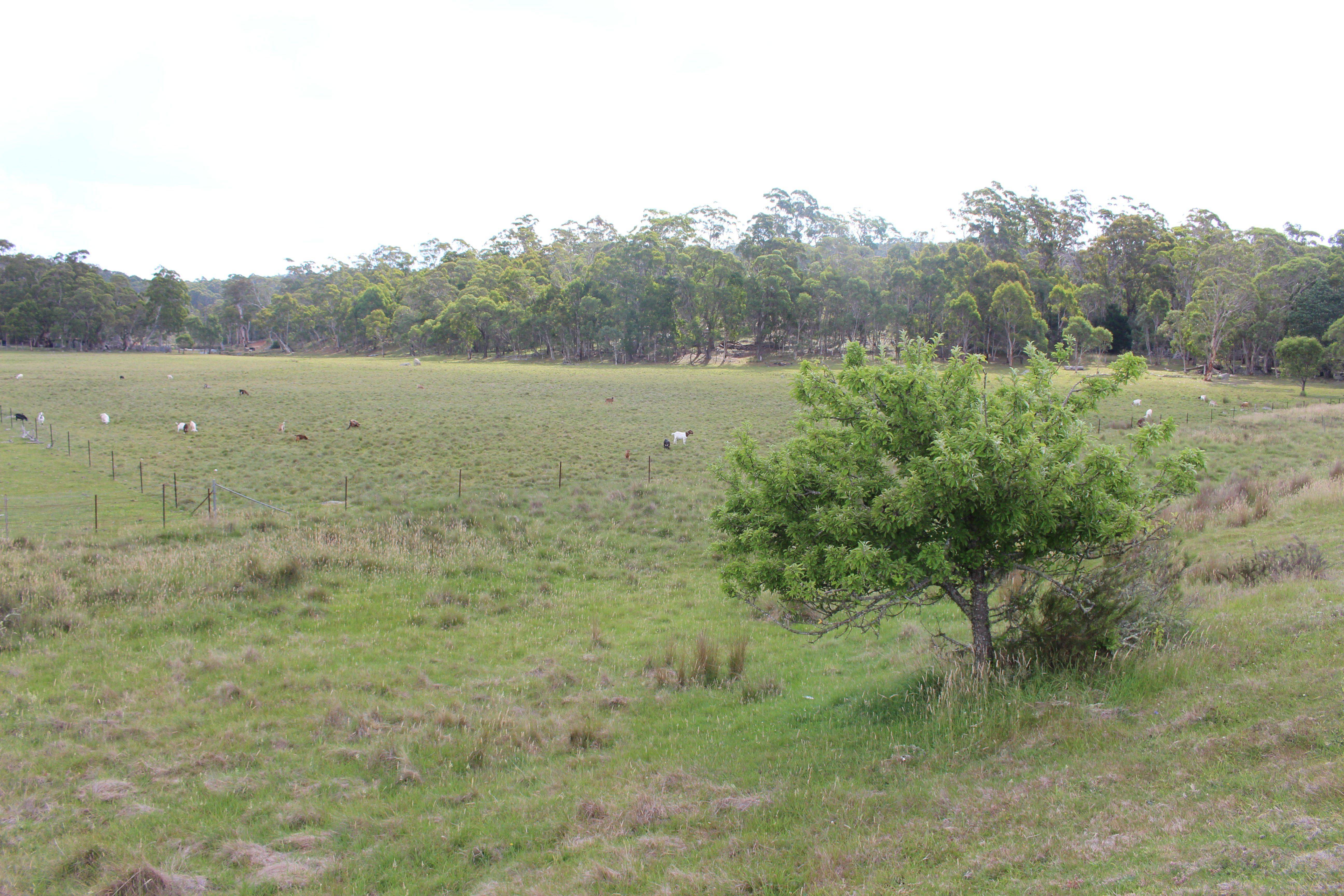The drive between the Far South Coast, Cooma, and Canberra is dotted with sites that make your mind wander.
Dilapidated railway bridges, decaying wildlife, rows of rural letterboxes, and sparkling solar farms, all inspire thought and question for the mindful traveller or curious passenger.
Right now, mixed with the scenic vistas on this 240km stretch of road is a more seasonal point of interest – apple trees heaving with fruit. Red, yellow, green apples bending branches to the ground.
There are dozens of apple trees growing in the harshest of conditions parallel to the highway and old railway line. At some points in this golden landscape, this native from Central Asia is the only show of green life.
How did they get there?
Are they any good to eat?
Growing alongside the Snowy Mountains and Monaro Highways is not the managed orchard environment I thought apples needed – perhaps I’ve watched too many pruning videos on YouTube and forgotten that apples are a tree like any other with their own wild force of nature!
While apples are the dominant feral fruit, you’ll also notice peach, plum, and pear trees.
Bega Valley Permacultrulist Kathleen McCann has a few theories to explain this roadside fruit salad; one of which is that she believes some of the trees date back to the horse and cart days.
“People did grow fruit trees and plant tree shelters at some of the stops they made on their journey,” Kathleen says.
“Often you can see tree cover, lone pines, and fruit trees in the oddest places along our highways, seemingly in the middle of nowhere. These are where the horse or carriage needed to stop for lunch or for the night.
“In the days of horse and carriage, people were only able to cover 10 to 20 kms per day, depending on the weight they were transporting and the terrain they covered. Remember everything was a dirt track and ungraded in those days,” she says.
Apple and pear cores, plum and peach seeds, discarded by travellers are also part of the story according to Kathleen.
“You can spot fruit trees along the railway track as well. These were definitely tossed out the window as a passenger finished their prized fruit and have germinated where they fell,” she says.
“These trees have existed in the elements all on their own and are therefore very hardy.”
Our green thumb also believes birds and animals have been a factor in spreading the trees.
“Stone fruit especially could have been carried quite a distance if the seed was swallowed by a cow or horse. Apple seeds could have been carried by birds and deposited in droppings,” Kathleen says.
Weeds are spread in similar ways and are a significant problem to the region’s landholders, however, despite not being a native, the apple trees aren’t considered a pest.
“The apples certainly aren’t a problem for us,” says Brett Jones, Vegetation Management Officer, Snowy Monaro Regional Council.
“The Biosecurity Act deals with weeds which have a direct impact on the areas social, economic and environmental values, which the roadside apples certainly don’t.
“If they were identified as harbouring pests like fruit flies, then they might cause some concern but I’m not aware of any negative impact,” Brett says.
Far from it, it seems a whole variety of species are enjoying this wild harvest – birds, kangaroos, cattle, flying foxes, and humans.
Friends of About Regional report using the apples in all sorts of recipes.
Former Canberra girl, Renee Griffiths O’Reilly says, “They are cider apples so very tart and ideal for making cider. Juice them then add winemakers yeast or alternatively make apple pies with a lot of sugar.”
Akolele local, Deborah Taylor suggests an old-fashioned apple dessert: “Baked apples – cored and filled with a mix of currents, raisins, sultanas, zest and juice of two oranges, butter and brown sugar too if you want to be indulgent”, she writes.
“Bake until soft. Serve with yoghurt or cream. Leftovers are great for breakfast with muesli and yoghurt.”
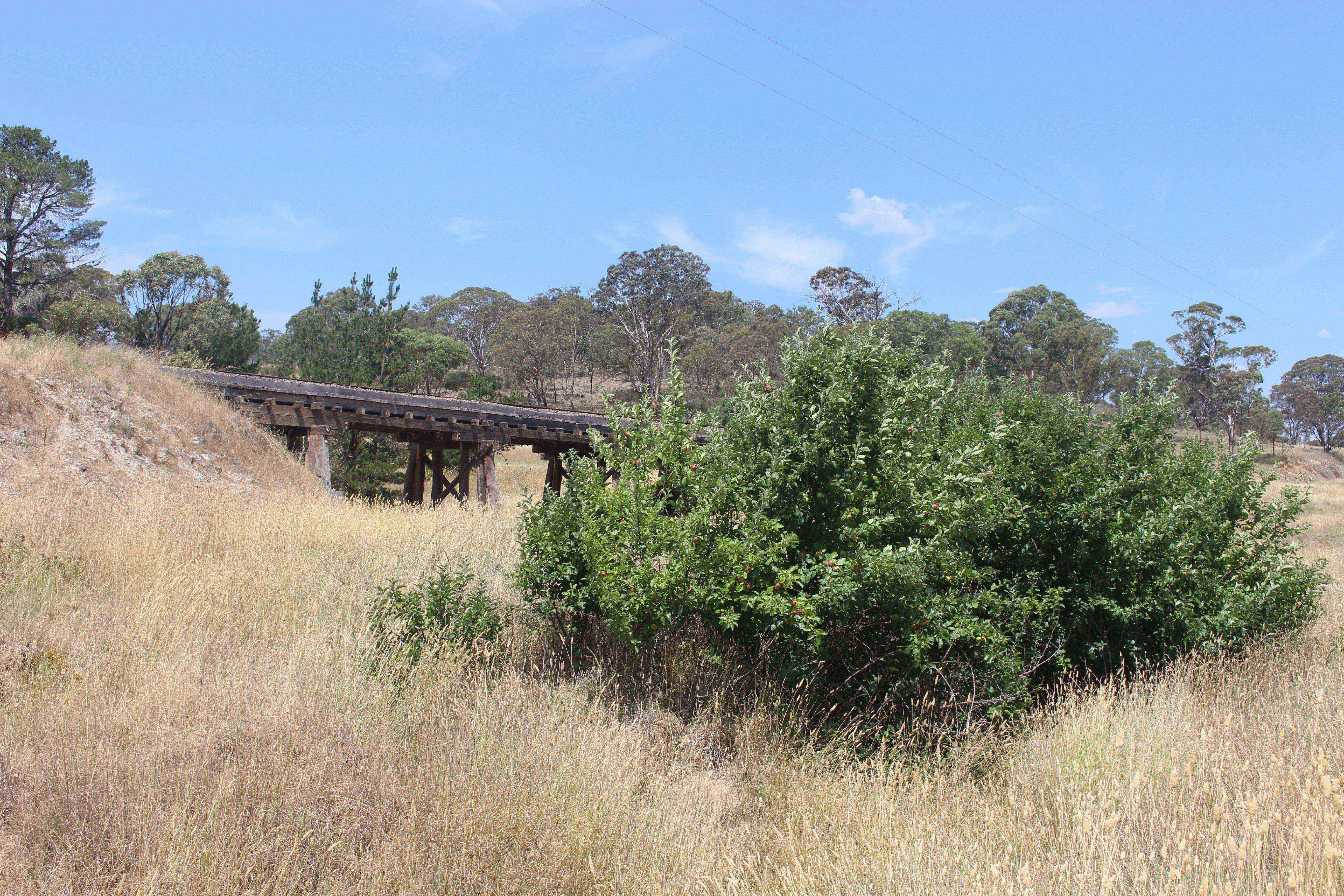
People throwing apple cores from a horse, train, or car is thought to be one of the reasons these ferals are here. Photo: Ian Campbell.
Show winner, Fiona Scott suggests apple jelly and is generous enough to share her secrets.
“It’s a bit fiddly but a good way to use apples that aren’t perfect,” she writes on About Regional Facebook.
“Cut up 2 kilograms of apples into fours, skin, core and all. Put into a big pot, like a stock pot with 1cm of water in the bottom.
“Bring slowly to the boil and simmer the whole mess until soft. Cool, then (the vital step) pour the whole lot into a muslin lined colander over a large bowl.
“A clean old cloth is fine if you don’t have muslin, just rinse well so the detergent remnants don’t make the jelly taste like Cold Power!” Fiona suggests.
“Leave overnight for the juice to drain. DO NOT SQUEEZE the leftover apple, compost it or the jelly will be cloudy.
“Measure the juice and put into the stockpot and bring to the boil. Add 40% equivalent in sugar, i.e. 1 litre of juice to 400 grams sugar.
“Stir the lovely pink mess until the sugar dissolves and continue boiling until it tests as set.
“I put a teaspoon of the juice onto a cold plate and when it is cool give it a push with my finger. Highly scientific! If wrinkles form like skin the chemistry is right for the jelly to set,” she writes.
“Pour into sterilised jars, cover with a clean cloth until cool, then cap the jars. Don’t put the lid on too soon or condensation from the cooling jam will make the jelly go mouldy.
“All that effort will give you several jars of the loveliest, clear pink and slightly wobbly apple jelly.
“Now you know all my jam making secrets,” Fiona confesses.

Sprout Cafe in Eden is currently baking Vegan Apple Loaf and Apple Crumble Cake. Photo: Karen Lott, Sprout Eden.
Sprout Cafe in Eden builds its weekly menu around what is seasonal and what is local, and the first apples are starting to come in from growers.
Elaine O’Rourke in the kitchen at Sprout is currently baking Vegan Apple Loaf and Apple Crumble Cake, and has shared the recipes with us!
Vegan Apple Loaf (Gluten Free)
1 ½ cups gluten-free self-raising flour
1 cup brown sugar
1 cup apple sauce
½ cup Nutlex
1 tsp cinnamon
1 ¾ tsp baking powder
1 tbsp Vanilla
½ cup almond milk
2 apples – peeled, cored and dicedBeat Nutlex and 3/4 of a cup of brown sugar until creamy, add apple sauce, vanilla and milk.
Mix in flour, baking powder, and cinnamon and stir until well combined.Mix the remaining 1/3 of a cup of brown sugar with the apple sauce and stir half the apples into the mixture.
Pour into a loaf tin approx 23cm x 13cm
Sprinkle the remaining apples on top.Bake at 180 degrees for 20 – 35 mins until a wooden skewer comes out clean.
Apple Crumble Cake (Gluten Free)
Crumble:
1 ¼ cups gluten-free plain flour
1 tsp baking powder
100g butter
½ cup caster sugarApple Filling:
5 apples – peeled, cored and diced
1 tbsp butter
½ tsp cinnamon
1 tbsp sugarBase:
100g butter
½ cup caster sugar
1 egg
1 cup gluten-free plain flour
1 tsp baking powder
1 tbsp milkMake crumble by mixing flour, baking powder and sugar together and rubbing in the butter.
Make the filling by cooking the apples until soft and cooling.
Make base by whipping butter and sugar together, adding the egg, flour, baking powder and milk.
Spread base into a lined pan or tray, top with filling mixture and sprinkle topping over.
Bake at 180 degrees for 40 – 50 mins until a wooden skewer comes out clean and sprinkle with icing sugar to serve.
Like the weather-beaten shearing sheds and chimneys without a house that dot the Snowy-Monaro countryside, the apple trees that grow in this soil are also a throwback to another time.
These tough local specimens of one of the world’s favourite fruits will be ready for harvest come late February – early March. Find a safe spot to pull over, grab a bag, and be a part of their ongoing connection with travellers.
*About Regional content is supported by, Snowy Monaro Regional Council, Sprout Eden, the Bega Valley Regional Learning Centre, Kylie Dummer, Kaye Johnston, Geoffrey Grigg, Robyn Kesby, Amanda Fowler, Sue and Duncan Mackinnon, and Geoff Berry.
*This article first appeared on RiotACT


